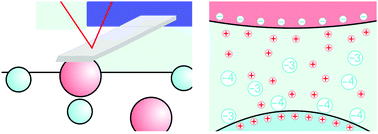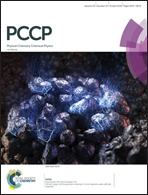Interactions between similar and dissimilar charged interfaces in the presence of multivalent anions
Abstract
Direct force measurements involving amidine latex (AL) and sulfate latex (SL) particles in aqueous solutions containing multivalent ferrocyanide anions are presented. These measurements feature three different pairs of particles, namely SL–SL, AL–SL, and AL–AL. The force profiles are quantitatively interpreted in terms of the theory by Derjaguin, Landau, Verwey, and Overbeek (DLVO) that is combined with a short-ranged exponential attraction. In monovalent salt solutions, the AL particles are positively charged, while the SL particles are negatively charged. In solutions containing ferrocyanide, the charge of the AL particles is reversed as the concentration is increased. The longer-ranged component of all force profiles is fully compatible with DLVO theory, provided effects of charge regulation are included. At shorter distances, an additional exponential attraction must be introduced, whereby the respective decay length is about 2 nm for the AL–AL pair, and below 1 nm for the SL–SL pair. This non-DLVO force is intermediate for the asymmetric AL–SL pair. These additional forces are probably related to charge fluctuations, patch-charged interactions, or hydrophobic forces.



 Please wait while we load your content...
Please wait while we load your content...